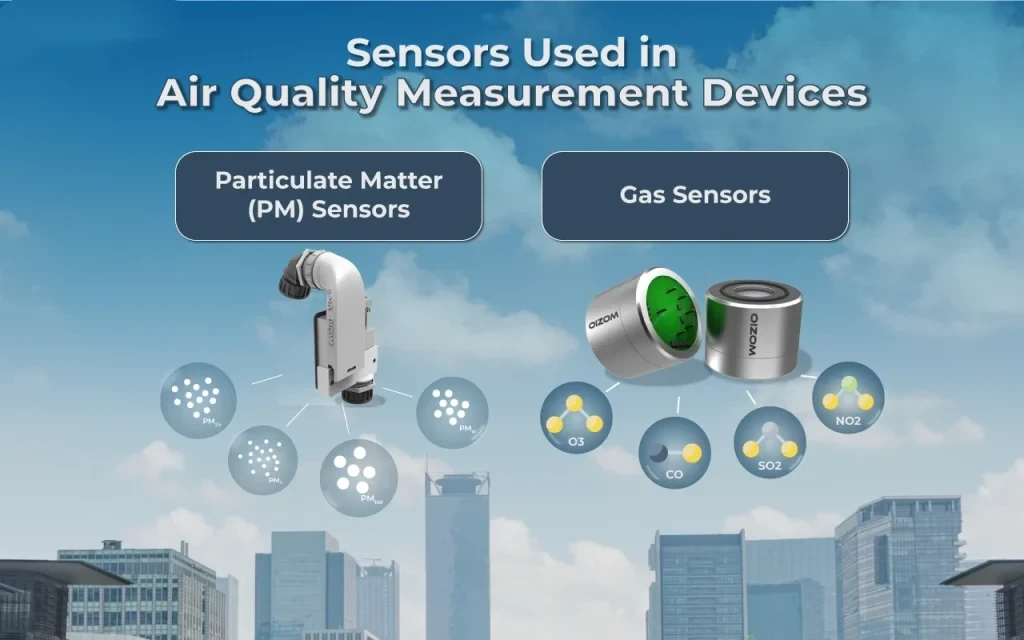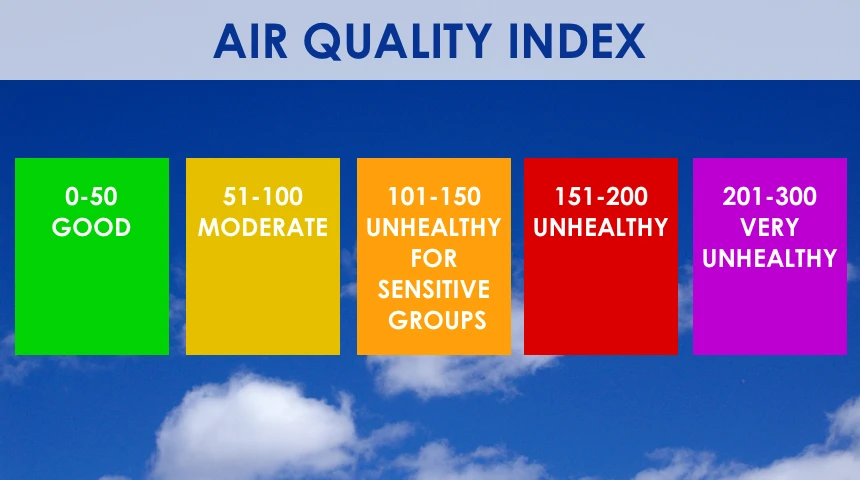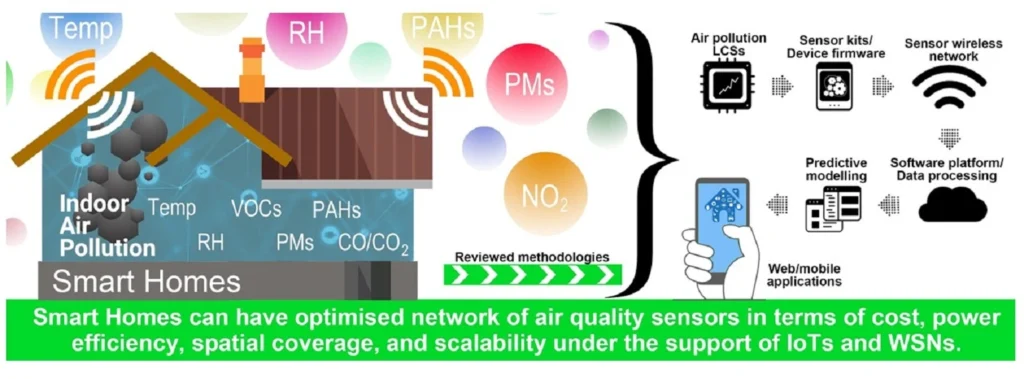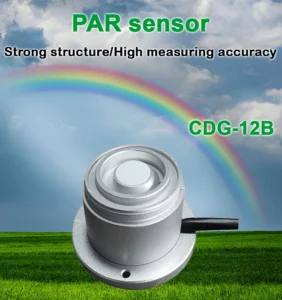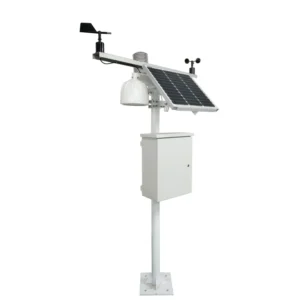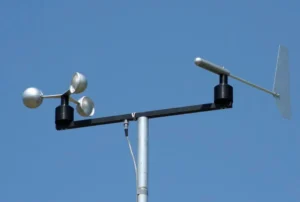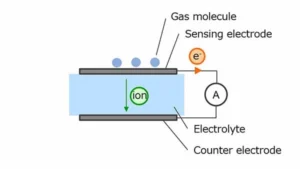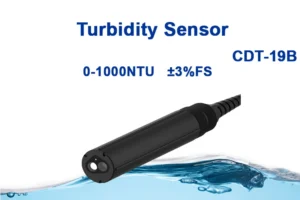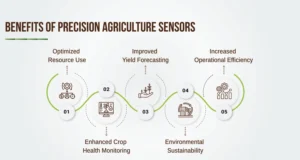what do air quality sensors measure
An air quality sensor is a device that finds and tracks air pollutants. It also looks at other environmental factors. It usually measures several air quality indicators. These include particulate matter, like PM2.5 and PM10, and gases such as carbon dioxide (CO2) and carbon monoxide (CO).
It also measures ozone (O3), formaldehyde, and benzene. It also checks temperature and humidity. These sensors are important in air purifiers and ventilation systems. They help make the air cleaner.
What do air quality sensors measure?
Ambient air quality sensors can assess a wide range of parameters such as:
– **Particulate matter**: PM1, PM2.5, PM10
– **Gases**: Ozone (O3), Carbon monoxide (CO), Carbon dioxide (CO2), Methane (CH4), Formaldehyde (HCHO), Total Volatile Organic Compounds (TVOC)
– **Environmental factors**: Temperature, Humidity, UV intensity, Light levels
How do air quality sensors work?
Air quality sensors work by using physical or chemical methods. They use optical, electrical, and thermal techniques to measure gas levels and particles in the air.
– **Detection methods**:
– The laser scattering principle measures the amount of tiny particles in the air, such as PM2.5 and PM10.
– The non-dispersive infrared technology (NDIR) measures the levels of CO2.
– We use sensors that work with electricity to find ozone and other specific gases.
Once you set up the device in a certain area, it collects pollution real time data. Then, it sends this data to a processor. The system converts the data into visual formats like charts or numbers. This helps users easily check air quality conditions.
Types of air quality sensors
Air quality sensors are divided by their purpose and function. We can group them into single-function sensors and multi-functional sensors. Single-function sensors focus on one specific parameter.
Multi-functional sensors can check many indicators at the same time. We also group them by their use: **indoor** and **outdoor** air quality sensors.
Examples of air quality sensors are:
Multifunctional air quality sensors
– AQI sensors
– Air quality monitors
– PM2.5 and PM10 sensors
– Gas measurement devices such as single or multi-gas detectors
These devices offer solutions based on user needs and specific uses. They can be used at home, in industries, for environmental studies, or in automated systems. Many models are available from manufacturers like Renke, providing options for all types of settings.
**Indoor Air Quality Sensors**
1. Compact Air Quality Sensor for Home Use
This air quality sensor is a common tool for checking indoor air quality monitors. It can measure PM2.5, VOCs, and formaldehyde (HCHO). It also calculates the Air Quality Index (AQI). Its small and portable design makes it easy to place on a table or nightstand.
It’s simple to use. Just press the button once to turn it on. Press it a few times for different readings. The clear display helps you see the data easily.
Its simplicity, low cost, and usefulness make it popular. It sells well on sites like Amazon.
2. Workshop-oriented PM Air Quality Sensing Device
This PM air quality sensor is designed for workshops and industrial areas. It measures particles like PM1.0, PM2.5, and PM10. You can mount it on the wall. Be sure to cover it with a waterproof and dustproof shell.
This makes it resistant to moisture and particles in the air, like smoke or dust. The surface filter blocks water and debris but allows PM particles to pass through. This ensures reliable data collection.
3. Versatile Air Quality Sensor for Building Applications
This versatile gas sensor has a round shape with a diameter of 168mm. We connect it using a snap-in base that can be installed on walls or ceilings. Made from strong ABS material, its compact design allows for different installations and indoor environments.
The sensor is very advanced. It can measure many environmental factors. These factors include CO2, temperature, humidity, PM2.5, PM10, and air pressure.
It can also find and measure different substances. These include light, total volatile organic compounds (TVOC), and formaldehyde.
It can also measure ozone (O₃), carbon monoxide (CO), and methane (CH₄). Additionally, it detects oxygen (O₂), sulfur dioxide (SO₂), and nitrogen dioxide (NO₂). It can also find hydrogen (H₂), hydrogen sulfide (H₂S), ammonia (NH₃), and more.
This wide range of detection abilities makes it good for monitoring in public areas.
Even though it has strong features, the lack of a display limits access to data on the device. Because of this, users must rely on outside systems to check the readings.
4. Composite Air Quality Sensor for Offices
This improved version of the air quality sensor has many features and is easy to use. It checks temperature, humidity, PM2.5, PM10, and air pressure.
It also tracks light levels, TVOC, CO2, and formaldehyde. It measures O3, CO, CH4, O2, SO2, NO2, H2, H2S, NH3, and more. The device has a 4.3-inch LCD touchscreen. This makes it easy to access and adjust settings manually.
**Enhanced Features**
A notable feature is its real-time alert system. When any detected gas level goes too high, the monitor turns red right away.
It quickly sends notifications by email, text, or phone calls. This helps users act fast. The sensor allows for 24/7 online monitoring of different indicators. This not only keeps indoor air healthier but also improves air quality in cities.
**Outdoor Air Quality Sensor**
1. Multi-Gas Solar Radiation Shield
The multi-gas air quality sensor has several gas sensors inside a solar radiation shield. This setup allows it to detect many substances. These include:
– TVOC
– CH2O
– O3
– Oxygen
– H2S
– Methane
– Carbon monoxide
– Nitrogen dioxide (NO2)
– Sulfur dioxide (SO2)
– Hydrogen (H2)
– Ammonia
– Other environmental elements.
An internal microprocessor processes the collected data and sends it out as an RS485 signal. This lets users see the data in real time. The solar radiation shield makes the device durable and reliable for outdoor use. It has great waterproof and dustproof features.
2. Dust Monitoring Equipment
The dust monitoring system is different from single-sensor devices. It is a complete setup with several parts. These parts are:
– a monitoring unit
– a data processing unit
– a data transmission unit
– a display unit
– a video character overlay unit It uses both hardware and software components.
– **Hardware**: Includes sensors and controllers that collect environmental data for upload.
– **Software**: Features a visualization platform to oversee data on-site 24/7.
**Application Areas**
Dust monitoring systems are great for buildings and construction sites. They can measure air quality factors. These include PM2.5, PM10, noise, wind speed, wind direction, and wind force. They also measure atmospheric pressure, temperature, humidity, and total suspended particulate matter (TSP).
We can show the data on LED screens or access it remotely through a computer or app. Installing these systems is more complex than using a single sensor. However, their long lifespan and many features make them very useful.
Advantages of Air Quality Sensors
**1. Promotes Health**
The main benefit of air quality sensors is that they help create a safer living space. They monitor indoor air in real-time and can alert you to improve ventilation when needed. They also give outdoor air quality information before you leave home, allowing you to take the right precautions.
**2. Multi-Functionality**
Modern air quality sensors provide many ways to monitor air quality. Users can track specific air indicators or a mix of them. Manufacturers often offer customization services. This helps adapt the sensor’s features to different environments or needs.
**3. Ease of Use**
Most air quality sensors are easy to use. Indoor models usually need simple activation and connection to mobile or computer devices. Industrial-grade sensors connect equipment in different locations to a central monitoring hub. This setup allows for tracking multiple points effectively.
**4. Broad Detection Range**
Air quality sensors have improved a lot. They now track more than just PM2.5 and PM10 levels. They can also find indoor pollutant concentration like formaldehyde and volatile organic compounds (VOCs). Additionally, they measure important environmental factors such as temperature, humidity, and air pressure.
**5. High Accuracy**
Technology keeps getting better at making air quality sensors more accurate. They can now find even small amounts of harmful gases, which helps with monitoring over time.

